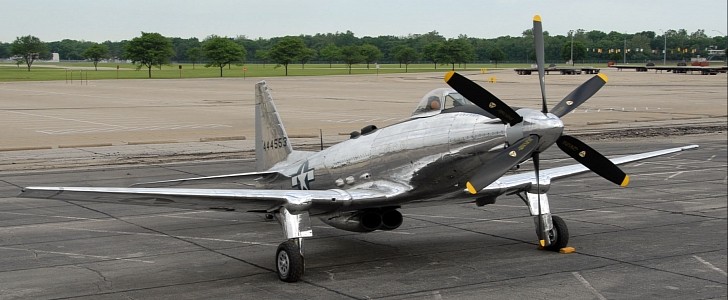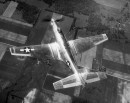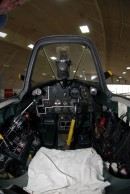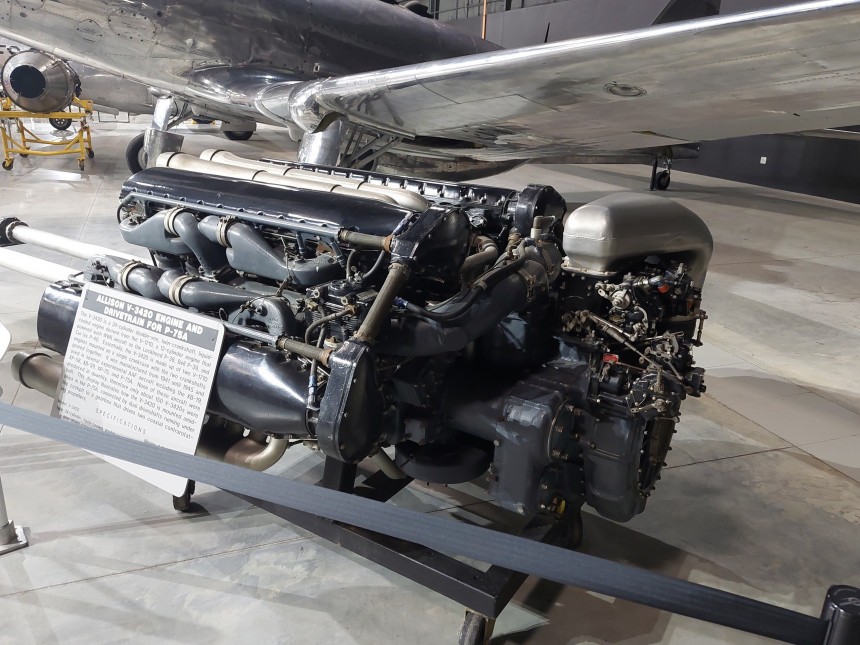You wouldn't believe the kind of shady things that "too big to fail" sized American automotive companies have gotten away with. From stealing patents from independent inventors to building Pintos with explode-happy fuel tanks, we've seen it all.
But of all the brazen tomfoolery, the Fisher P-75 Eagle program may take the cake. Firstly, what exactly does this mostly forgotten prototype interceptor of the Second World War have to do with the American auto industry? The answer requires a little bit of digging through the history books.
The Fisher Body Company was an automotive coachbuilder native to Detroit, Michigan. Beginning in the early 1910s, the company forged a working relationship with General Motors, making bodies for all of GM's divisions. Including Chevrolet, Buick, and Cadillac. Priorities changed with the United State's entry into the Second World War in December 1941. Along with all of its General Motors siblings, Fisher had to find something productive towards the war effort to maintain their government contracts.
GM factories manufactured tanks, weapons, and aircraft designed by other companies during this period, but not Fisher. Fisher was delegated to something more novel, a powerful interceptor that could be built quickly and cheaply.
GM determined the best way to achieve this was to forge a design based upon components largely derived from other American planes. The wings were borrowed from the Curtis P-40 Warhawk, the bottom section of the fuselage comes from a Vought F4-U Corsair, and a tail based on the Douglas SBD Dauntless dive bomber. Quite an "interesting" choice of a rear-end if your goal is to build a maneuverable interceptor with ten .50-caliber Browning machine guns as main armament. That's putting it mildly.
The overlying idea was that a design thrown together out of spare parts would be cheaper to build than an entire bespoke airframe. In all fairness, this practice was nothing new in both the automotive and aeronautical industries. The only problem with such a design is you're going to need something truly special to power it.
Fisher decided to use the Alison V-3420, a monstrous 24-cylinder leviathan also from a GM division. The engine was mated to a six-bladed contra-rotating propeller, and with over 2,500 horsepower on tap, nothing in the water-cooled, piston-engine category came remotely close to this figure. Even early turbojet engines struggled to make equivalent power numbers, at least for a sustained period of time.
So then, what on Earth went wrong? Well, it'd be a bit crass and possibly inaccurate to call it out and out fraud. But at the very least, what transpired was Marshal Mathers in 8 Mile levels of shady. Ironic, as both Eminem and this plane come from Detroit.
Many may not know that by 1944, Fisher's Eagle was starting to bleed the U.S. military budget in a way that was starting to become irritating. Around this time, the Army Air Corps politely asked for a section of their production to be dedicated to the Boeing B-29 Superfortress.
According to legend, the promise of a shiny new all-weather interceptor prototype was enough for the bureaucrats in the U.S. Military to stop paying attention sufficiently. But what is concretely known is not a single Superfortress was ever produced in the GM plant.
What was less forgivable was the math on the center of mass being slightly off, resulting in an airframe with what was described as having horrendous flight characteristics. The final nail in the coffin was the once hyped Allison engine turning out to be an unreliable, maintenance-heavy pig of a powerplant. Only 14 P-75 Eagles ever left Fisher factories, eight XP-75s and six P-75As
All to the tune of a staggering $50 million invested by the Army Air Corps. In 2022 money, that's an eye-watering $900,000,000. Ironically, the designations "P-75" and "Eagle" were explicitly designated for a fighter the American Armed Forces anticipated would be groundbreaking. As it turned out, the run-of-the-mill P-51D Mustang and P-47 Thunderbolt was better in just about every respect.
Today, the sole known survivor of the Fisher Eagle program sits on display in the experimental aircraft section of the National Museum of The United States Air Force in Dayton, Ohio. Alongside a litany of other odd-ball aircraft built on the American taxpayer's dime. The Eagle name wouldn't be seen again until the F-15 project thirty years later. This time, the Eagle name went to something far more worth while.
Check back for more from our trip to the Natiomal Museum of the United States Air Force, and so much more, right here on autoevolution.
The Fisher Body Company was an automotive coachbuilder native to Detroit, Michigan. Beginning in the early 1910s, the company forged a working relationship with General Motors, making bodies for all of GM's divisions. Including Chevrolet, Buick, and Cadillac. Priorities changed with the United State's entry into the Second World War in December 1941. Along with all of its General Motors siblings, Fisher had to find something productive towards the war effort to maintain their government contracts.
GM factories manufactured tanks, weapons, and aircraft designed by other companies during this period, but not Fisher. Fisher was delegated to something more novel, a powerful interceptor that could be built quickly and cheaply.
GM determined the best way to achieve this was to forge a design based upon components largely derived from other American planes. The wings were borrowed from the Curtis P-40 Warhawk, the bottom section of the fuselage comes from a Vought F4-U Corsair, and a tail based on the Douglas SBD Dauntless dive bomber. Quite an "interesting" choice of a rear-end if your goal is to build a maneuverable interceptor with ten .50-caliber Browning machine guns as main armament. That's putting it mildly.
Fisher decided to use the Alison V-3420, a monstrous 24-cylinder leviathan also from a GM division. The engine was mated to a six-bladed contra-rotating propeller, and with over 2,500 horsepower on tap, nothing in the water-cooled, piston-engine category came remotely close to this figure. Even early turbojet engines struggled to make equivalent power numbers, at least for a sustained period of time.
So then, what on Earth went wrong? Well, it'd be a bit crass and possibly inaccurate to call it out and out fraud. But at the very least, what transpired was Marshal Mathers in 8 Mile levels of shady. Ironic, as both Eminem and this plane come from Detroit.
Many may not know that by 1944, Fisher's Eagle was starting to bleed the U.S. military budget in a way that was starting to become irritating. Around this time, the Army Air Corps politely asked for a section of their production to be dedicated to the Boeing B-29 Superfortress.
What was less forgivable was the math on the center of mass being slightly off, resulting in an airframe with what was described as having horrendous flight characteristics. The final nail in the coffin was the once hyped Allison engine turning out to be an unreliable, maintenance-heavy pig of a powerplant. Only 14 P-75 Eagles ever left Fisher factories, eight XP-75s and six P-75As
All to the tune of a staggering $50 million invested by the Army Air Corps. In 2022 money, that's an eye-watering $900,000,000. Ironically, the designations "P-75" and "Eagle" were explicitly designated for a fighter the American Armed Forces anticipated would be groundbreaking. As it turned out, the run-of-the-mill P-51D Mustang and P-47 Thunderbolt was better in just about every respect.
Today, the sole known survivor of the Fisher Eagle program sits on display in the experimental aircraft section of the National Museum of The United States Air Force in Dayton, Ohio. Alongside a litany of other odd-ball aircraft built on the American taxpayer's dime. The Eagle name wouldn't be seen again until the F-15 project thirty years later. This time, the Eagle name went to something far more worth while.
Check back for more from our trip to the Natiomal Museum of the United States Air Force, and so much more, right here on autoevolution.









